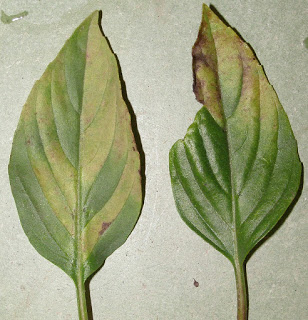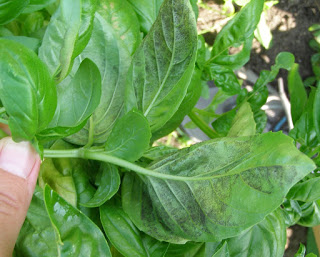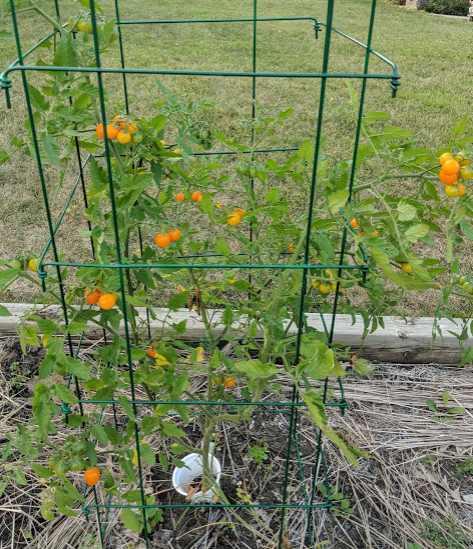Click below to listen to my 2 min. Garden Bite radio show: Of basil and tomatoes
While I’ve been enjoying fresh basil on my salads, some gardeners are reporting their basil with yellowing leaves and dark spots.

M. Grabowski, UMN Extension
Some folks in the upper midwest have experienced significant rainfall and humid conditions. First found in the U.S. in 2007, downy mildew is a devastating disease of basil, resulting in infection and complete loss of the plant.

M. Grabowski, UMN Extension
Basil downy mildew is caused by (Peronospora belbahrii), a water mold that thrives in warm humid conditions. The pathogen can’t survive our harsh winter weather, but can be brought into our cold zones on infected seeds, transplants, or as spores on warm moist air currents. If your basil is showing signs of the downy mildew, there’s nothing that can be done…

M. Grabowski, UMN Extension
Gardeners should harvest any remaining healthy leaves as soon as possible. The infected plant should then be buried under garden soil or in the compost pile to prevent spores from blowing to nearby plants. The pathogen won’t survive winter in soil or compost.
On another note:
I’ve also heard from multiple gardeners that they’re seeing far fewer ripe tomatoes than normal, as I pointed out yesterday, the ‘Celebrity’ just wasn’t ripe enough. The one that IS producing is a new one to me, a very flavorful cherry tomato called ‘SunSugar’. The odd thing is, there are maybe 8 little tomatoes at a time that are ready for harvesting. That’s not very many! I don’t think my husband’s had any… I go home for lunch first!

I spoke with our local Police Chief during our Night to Unite last week and he mentioned that the police station Basswood trees have had all their leaves completely skeletonized by Japanese Beetles. They love Lindens too. A tree expert advised them to replace them with an Oak or Maple.
